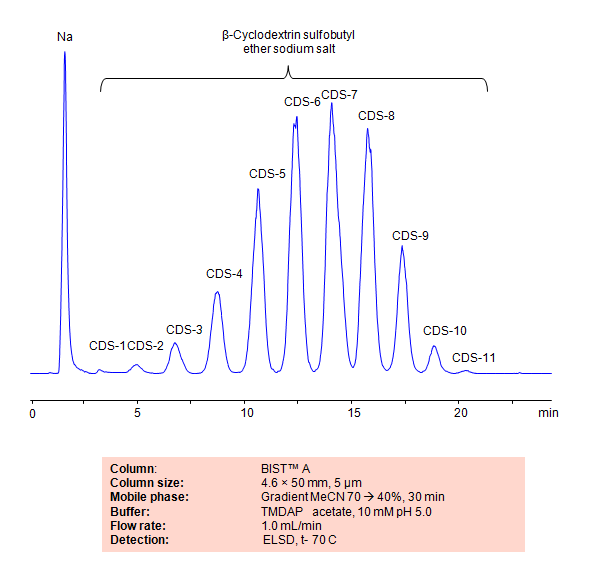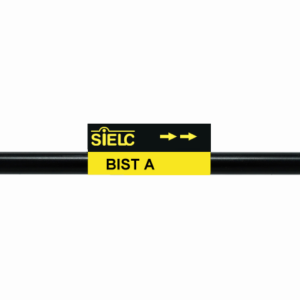| HPLC Method for Analysis of B-Cyclodextrins sulfobutyl ether on a BIST A.
Cyclodextrins are ring-shaped oligosaccharides formed in nature by the digestion of cellulose by bacteria. Cyclodextrins have utility for solubilizing and stabilizing drugs. B-Cyclodextrins sulfobutyl ether is a cyclodextrin made of 7 glucose subunits, each with a negatively-charged sulfobutyl ether group attached. Using SIELC’s newly introduced BIST™method, B-Cyclodextrins from different manufacturers, can be retained on a negatively-charged, cation-exchange BIST™ A column. There are two keys to this retention method: 1) a multi-charged, positive buffer, such as N,N,N’,N’-Tetramethyl-1,3-propanediamine (TMDAP), which acts as a bridge, linking the negatively-charged B-Cyclodextrin analytes to the negatively-charged column surface and 2) a mobile phase consisting mostly of organic solvent (such as MeCN) to minimize the formation of a solvation layer around the charged analytes. With a fairly simple gradient, these cyclodextrins can be separated and retained on a BIST™ A column. The gradient is necessary because of the extremely strong retention in BIST™. By slowly transitioning to a low-organic mobile phase, the solvation layer increases, reducing BIST™ interactions, and the analytes are able to elute in an appropriate amount of time. Various manufacturers’ B-Cyclodextrins can be retained and separated using BIST™, and this method is compatible with mass spectrometry (MS), evaporative light scattering detection (ELSD), charged aerosol detection (CAD).
|
|
Description
Class of Compounds
|
Polymer, Drug |
| Analyzing Compounds |
Sulfobutyl ether Beta Cyclodextrin Sodium (SBECD) |
|






